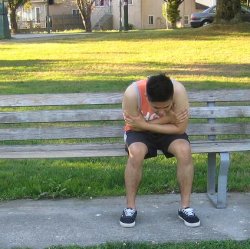Neck pain can happen anywhere in the neck from the bottom of the head to the top of the shoulders. The pain can also spread to the upper back or arms and limits the amount of movement of the head and neck. Neck pain is common in individuals older than 50 years old.
Causes of neck pain

- Most cases of neck pain are caused by activities that cause straining of the neck such as slouching, painting a ceiling or sleeping with a twisted neck.
- Neck pain can also be caused by a fall from a ladder or whiplash from vehicular accidents.
- Holding the head in a forward or in an odd position for long periods of time during working, reading, watching TV or talking to a telephone.
- Sleeping on a pillow that is too high or too flat that does not support the neck and sleeping on the stomach with the neck twisted.
- Spending long periods by resting the head on the upright fist or arm.
- Work or an exercise that uses the upper body and arms such as painting a ceiling and other overhead activities.
- Being stressed out and intensely immersed on a particular task can also instigate neck pain. Tension might develop in one of the muscles that are responsible for connecting the head, neck and shoulders. This will eventually lead to tightness and pain.
Symptoms of neck pain
- Neck pain can spread to the upper back, shoulders and arms
- Pain becomes worse when moving the affected areas
- The neck becomes stiff and tender which causes headaches that may last for months.
Treatment and home remedies
- Use a heating pad that is set on low or medium setting for 15-20 minutes every 2-3 hours.
- Encourage the individual to take a warm shower and use single-use heat wraps that can last for 8 hours.
- Apply an ice pack 10-15 minutes every 2-3 hours in the affected area. If you want to learn more about cold therapy, click here to learn more.
- Resume normal daily activities as soon as possible since movement will keep the muscles strong but avoid engaging in activities such as lifting and playing sports that will worsen the stiffness and pain.
- Perform stretching and strengthening exercises in order to keep the neck supple and strong as well as minimize stiffness.
- Avoid activities that may cause neck pain such as sitting for a long time in front of a computer and overhead work.
- Massage or rub the affected area in order to relieve pain and encourage circulation but avoid massage if there is pain.
- Provide the individual with acetaminophen to help minimize pain and inflammation.
- Avoid being stressed at home and work.
- Exercise regularly.
With the help of these treatment measures, you can easily provide ease to the neck pain experienced by the individual.
